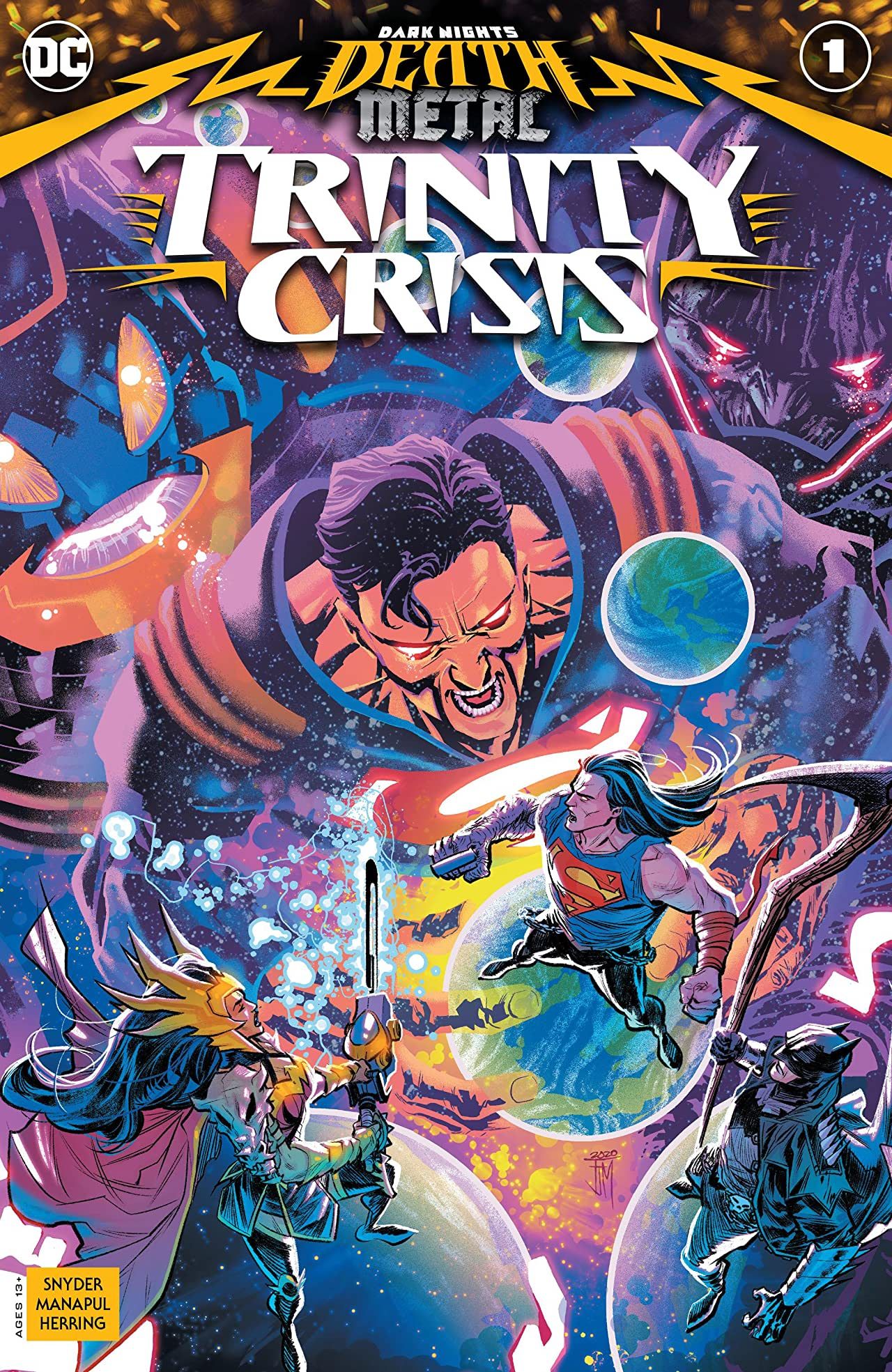Death Metal: Trinity Crisis #1
- WRITER
- Scott Snyder
- Artist
- Francis Manapul
- Letterer
- Tom Napolitano
- Cover Artist
- Kyle Hotz, Francis Manapul
- Publisher
- DC Comics
- Price
- 5.99
- Release Date
- 2020-09-08
- Colorist
- Ian Herring
While the core series for DC Comics' crossover event Dark Nights: Death Metal is taking a break this month before returning for its fourth issue in October, the overarching story continues in September's line of tie-ins issues. Leading the charge for the month is Trinity Crisis, a one-shot special by Death Metal writer Scott Snyder and acclaimed artist Francis Manapul. And while the issue is billed as a tie-in, it really does feel like a vital piece of the overall story, picking up threads from the core series third issue and setting up its main characters for their next step in the war to save the DC Multiverse.
Following Wonder Woman, Batman and Superman after they freed the other DC superheroes from imprisonment on Apokolips, the comic underscores the importance of past Crises and the resulting energy that they cause. After the quick DC Universe history lesson, the heroes divide into strike teams, each with an important mission to overthrow the Darkest Knight and Perpetua to restore the DC Multiverse. The issue then follows the core DC trinity of heroes as they launch the most dangerous mission of all, pitting them against evil beyond the likes they could possibly imagine.
With Snyder at the helm, the issue really does feel like a natural continuation of the core series, reading like Death Metal #3.5 rather than a standalone tie-in. With that in mind, the issue assumes that readers are up-to-date with the core series and have a cursory understanding of major Crises from the DCU's past, namely 1985's Crisis on Infinite Earths, 2005's Infinite Crisis and 2008's Final Crisis. Despite the raised stakes and fiery intensity, the tie-in retains the sharp sense of humor Snyder has employed in the main series, particularly evident through the dialogue between several of the main characters as Jonah Hex and Jarro continue to serve largely as comedic foils. While Snyder takes full advantage of his growing ensemble cast, he juggles the many voices expertly.
The real showcase here is Manapul's artwork, joined by colorist Ian Herring. Manapul gets to deliver his own epic take on the biggest Crisis moments in DC history, with the issue packed with plenty of splash pages to give Manapul's work the room it needs to expand and breathe, accommodating the respective Crises' extensive casts. Snyder knows when to pull back and let Manapul and Herring do all the talking, with each double-page spread delivering on the story's ambitious scope. Despite the hellish rewrite of the DCU in the main series, Herring is employing a colorful color palette while Manapul's linework is evocative of George Perez, Phil Jimenez and J.G. Jones' work on their respective previous stories.
It will be interesting to see how Snyder and Greg Capullo continue the main Death Metal series next month and keep it accessible for those that skip this issue because Trinity Crisis really does feel like a must-read title for the main story. Firmly embedded within the events of the core series and leaving many of its characters at a cliff-hanging crossroads by the issue's end, Trinity Crisis is more crucial than any of the previous tie-ins. Scott Snyder and Francis Manapul's reunion sees Death Metal's story firing on all cylinders while weaving in past elements of the DCU's historic tapestry into the narrative. Fun, freewheeling and true to its characters, Dark Nights: Death Metal - Trinity Crisis #1 is one of those issues that feels like it should be collected with the core series for the eventual collection, because it would all feel incomplete otherwise.

